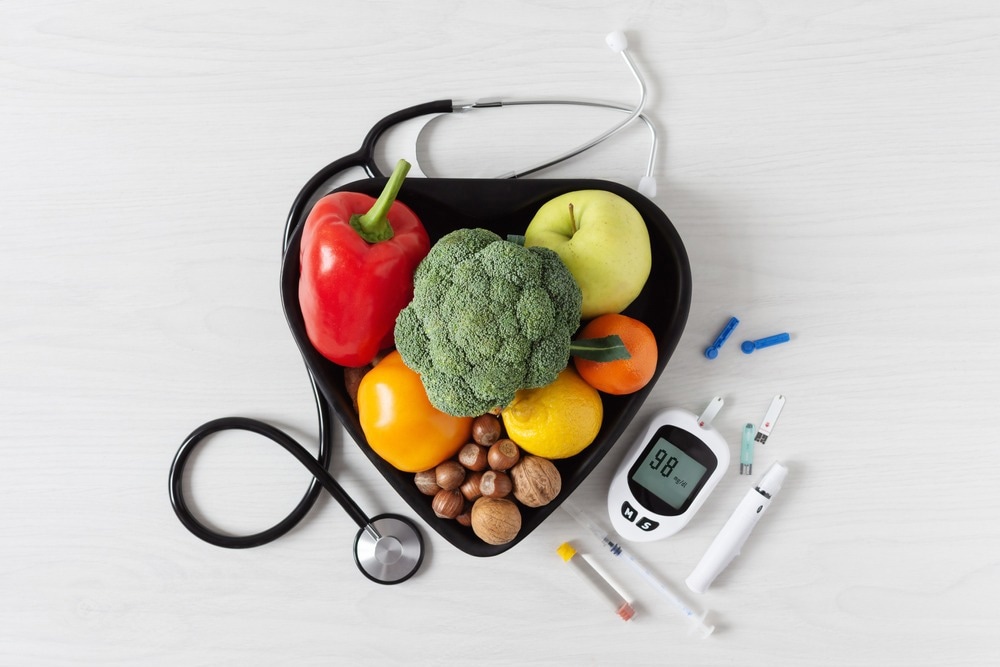Rare sugars in a diabetic diet: the efficacy of a D-allulose-containing diet in patients with type two diabetes

In a recent study published in Nutrients, researchers evaluated the effectiveness of diabetic diets containing D-allulose among type 2 diabetes (T2D) patients.

Background
Diabetes is widely prevalent globally, most cases of which are type 2, characterized by insulin resistance and decreased insulin secretion. The fundamental T2D therapy comprises dietary modifications, regular physical activity, and medications; however, lifestyle habits are the most critical to lowering the diabetes burden.
Excessive sugar intake enhances obesity, cardiovascular disease, and diabetes risks. Artificial sweetening agents have been used as safe sugar alternatives among diabetic patients; however, there are concerns over exacerbations in glucose metabolic reactions by artificial sweeteners. D-allulose is the C-3 isomer of D-fructose, a rare sugar with proven anti-obesity and anti-diabetic properties.
About the study
In the present prospective, randomized, single-blinded, crossover comparative study, researchers investigated whether D-allulose-containing diets could improve the glycemic control of T2D patients.
The study included 24 individuals hospitalized at Kagawa University’s hospital from December 2019 to August 2022. Blood glucose levels were measured using an intermittently scanned continuous glucose monitoring system (isCGM). Only hospitalized T2D patients aged 20 to 80 years were included with glycated hemoglobin (HbA1c) values ≥6.50% willing to participate.
The participants were divided into two groups: A and B. Group A individuals were fed diabetic diets three times daily for two days. After a washout period of ≥ 1.0 days, the participants were provided D-allulose-containing diabetic diets three times daily for two days. The dietary regime was reversed among Group B individuals. Total daily energy intake was determined following the Japan Diabetes Society’s Diabetic Care 2019 guidelines.
C-peptide immunoreactivity (CPR) and insulin immunoreactivity (IRI) were measured. The primary endpoints were peak postprandial blood glucose (PPG) levels after consuming standardized diabetic diets and those comprising 8.50 g of D-allulose.
Secondary study endpoints included PPG trends assessed using the isCGM system, the duration of blood glucose values in the target range of 70.0 to 180.0 mg per dL [percent time in range (TIR)], the duration of hypoglycemic episodes (below 70.0 mg/dL) that was less than the TIR [percent time below range (TBR)], and that of hyperglycemic episodes (above 180.0 mg per dL) exceeding the TIR [percent time above range (TAR)].
Safety endpoints included changes in the number of diarrheal episodes. In addition, participants filled out questionnaires ascertaining satisfaction, smell, seasoning, and coloring. The team excluded individuals consuming α-glucosidase inhibitors, those with a positive history of serious adverse events following D-allulose intake, and those with serological creatinine ≥1.50 mg/dL (indicative of severe kidney dysfunction).
Additionally, pregnant and lactating women, individuals participating in other trials, and those considered unsuitable for the study by physicians were excluded. Linear mixed-effects modeling was used for the analysis.
Results
Initially, 45 individuals were screened for eligibility, 21 that did not satisfy the inclusion criteria were excluded, and 24 were enrolled in the study. However, four individuals dropped out of the study, reducing the final sample size to 20. The mean peak PPG values for the D-allulose-containing diet and standard diabetic diets were 173.0 and 191.0 mg/dL, respectively.
The findings indicated that D-allulose-containing diabetic diets significantly lowered PPG levels among T2D patients compared to strictly energy-controlled diabetic diets. In addition, a protective effect was observed on the endogenous insulin secretory ability of the pancreas due to lowered insulin requirements. The carryover effects were negligible, with no washout issues.
D-allulose diets reduced the area under the curve (AUC) from 0.0 to 180.0 minute-PPG levels (25,408 versus 27,550 mg-min/dL) and %TAR values (30% versus 21%). However, no statistically significant changes were observed in the TIR ratios (68% versus 74%) and TBR values, with no increase in the frequency of hypoglycemic episodes (2.10% versus 5.0%).
CPR levels decreased significantly with reductions in blood glucose readings. Non-significant differences in satisfaction, smell, seasoning, and coloring were observed. There were no safety concerns with non-significant changes in the frequency of diarrheal episodes. None of the participants had any odour- or taste-related complaints, and none could distinguish between the two diets.
Reported mechanisms underlying D-allulose’s blood glucose-lowering effects include the inhibition of monosaccharide absorption by small intestinal cells, promotion of glycogen synthesis through glucokinase activation in the liver, pancreatic protection, and improvements in the capacity to secrete insulin by the pancreas. D-allulose may improve glucose tolerance and decrease appetite by increasing glucagon-like peptide-1 (GLP-1) secretion and altering central nervous system (CNS) activity through the vagus nerve.
Based on the study findings, diabetic diets comprising 8.50 g of D-allulose effectively improved postprandial blood glucose levels, indicating that D-allulose may improve glucose tolerance and protect pancreatic β cells among T2D patients. However, further research, including larger sample sizes and longer follow-ups, is required to increase the validity of the study’s findings.
- Fukunaga, K. et al. (2023) "A Pilot Study on the Efficacy of a Diabetic Diet Containing the Rare Sugar D-Allulose in Patients with Type 2 Diabetes Mellitus: A Prospective, Randomized, Single-Blind, Crossover Study", Nutrients, 15(12), p. 2802. doi: 10.3390/nu15122802. https://www.mdpi.com/2072-6643/15/12/2802
Posted in: Medical Science News | Medical Research News | Disease/Infection News | Healthcare News
Tags: Artificial Sweeteners, Blood, Cardiovascular Disease, Central Nervous System, CPR, Creatinine, Diabetes, Diabetes Mellitus, Diet, Efficacy, Frequency, Fructose, GLP-1, Glucagon, Glucagon-like Peptide-1, Glucose, Glycated hemoglobin, HbA1c, Hemoglobin, Hospital, Hypoglycemic, Insulin, Insulin Resistance, Kidney, Liver, Nerve, Nervous System, Nutrients, Obesity, Pancreas, Physical Activity, Research, Type 2 Diabetes

Written by
Pooja Toshniwal Paharia
Dr. based clinical-radiological diagnosis and management of oral lesions and conditions and associated maxillofacial disorders.
Source: Read Full Article




